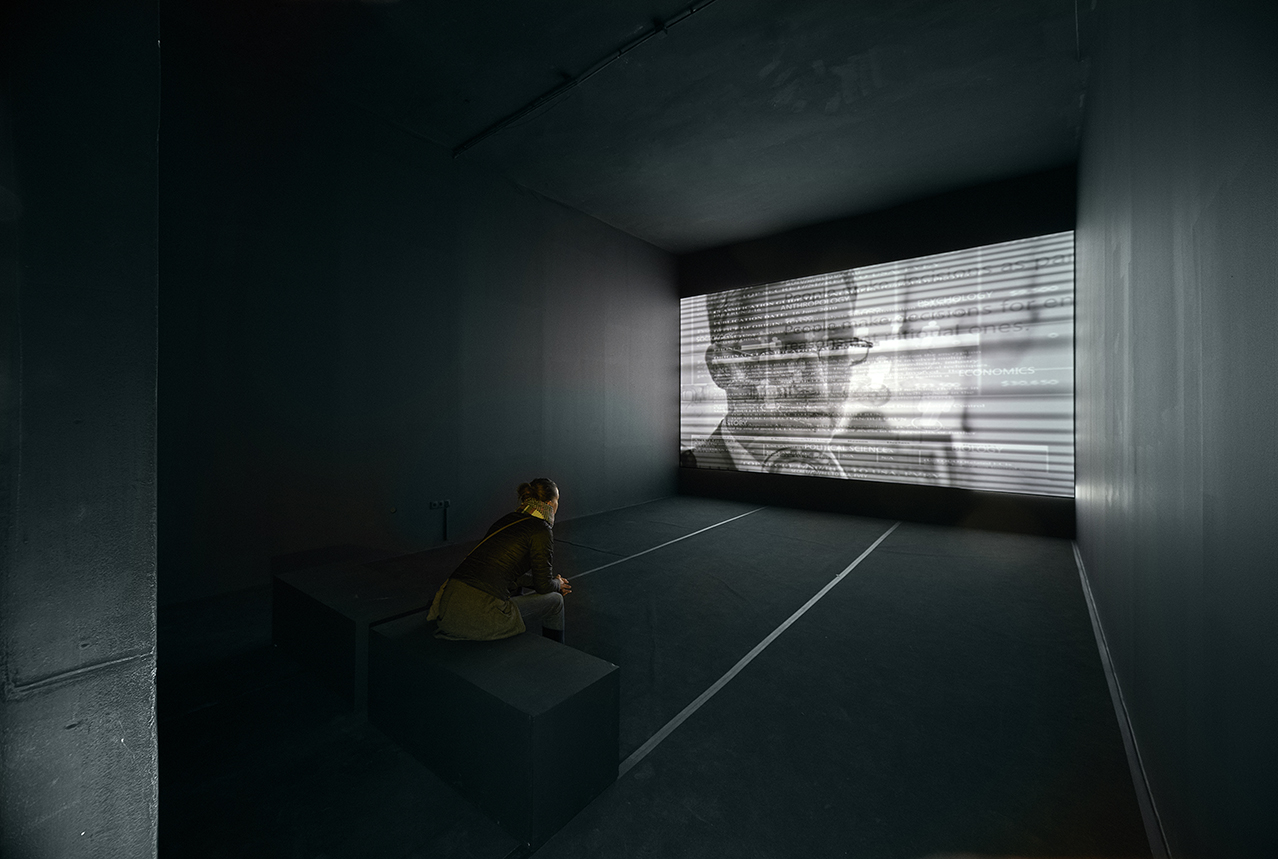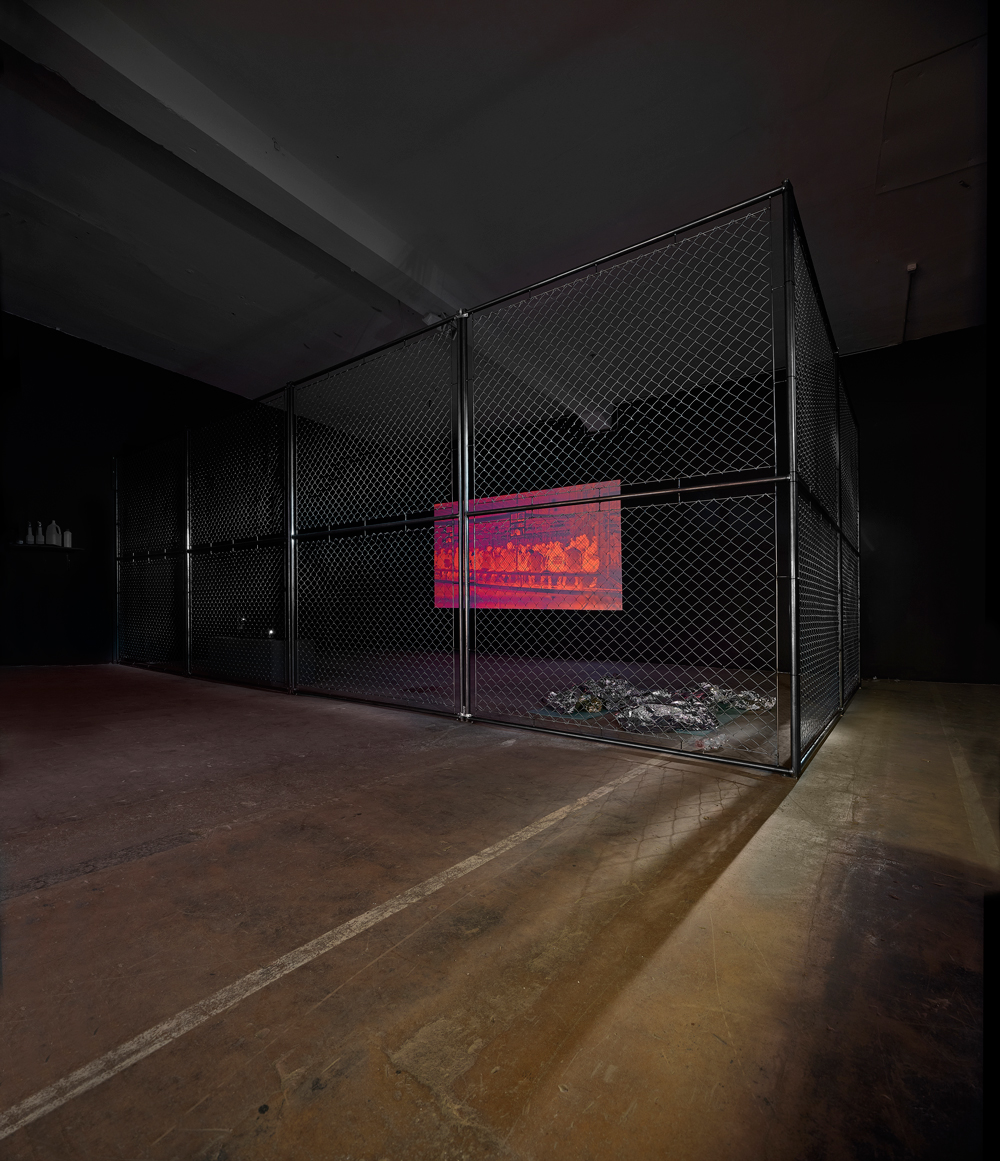Michael Takeo
Magruder (US/UK)
Zero Tolerance, 2018
A media installation exploring the context and rhetoric surrounding the separation and detention of migrant families crossing the US southern border.
On the 6th of April 2018, the Office of the Attorney General of the United States of America issued a memorandum for all federal prosecutors working along the nation’s southwest border. The stated purpose of the communiqué was “to adopt immediately a zero-tolerance policy for all offenses referred for prosecution” under Title 8 of US Code section 1325(a) concerning illegal entry into the country by “alien” persons for reasons of “improper time or place; avoidance of examination or inspection; [and] misrepresentation and concealment of facts”.
In the following weeks, alongside growing domestic and international concern about the detrimental effects on migrant families attempting to cross the border, the government’s stance was widely defended by the heads of various US agencies and departments responsible for implementation of the program. During the first two months of the policy being in effect, more than 2,500 children were forcibly separated from their families and relocated to over one hundred detainment facilities spread throughout the country. Amidst the conflicting accounts and reports put forward by numerous government and media sources commenting on the crisis, the fate of many of these children remains an open question.
Zero Tolerance is a new media installation that explores the context and rhetoric surrounding the separation and incarceration of migrant families crossing the US southern border. Set behind chainlink fence and alongside mundane artefacts associated with the detention centers, an algorithmic video continually splices official government footage and undercover recordings from actual detainment facilities with former Attorney General Jeff Sessions’ public speech calling for ‘biblical’ justice.
Source Material:
– recorded broadcast of former US Attorney General Jeff Sessions’ public speech in Fort Wayne, Indiana on 14/06/2018 addressing criticisms of the US Administration’s zero-tolerance policy
– official government video documentation by US Border Patrol showing the detention centre in McAllen, Texas that was released on 17/06/2018
– audio recording of children detained within a US Customs and Border Protection facility that was obtained by the non-profit media organisation ProPublica and published on 18/06/2018
http://www.takeo.org/nspace/2018-zero-tolerance/
PRISM, 2014
A new media installation reflecting on programs of mass surveillance and issues of personal privacy in the Information Age.
On 6th June 2013, journalists from The Guardian and Washington Post reported that the US National Security Agency (NSA) was undertaking a portfolio of clandestine mass surveillance programs on a scale reminiscent of George Orwell’s dystopian society of 1984. The NSA's initiatives supposedly ranged from the bulk collection of email and telephone records to infiltrating the data infrastructures of every leading Internet company and service provider.
In response to these allegations, the US government claimed that the NSA and other sections of its intelligence community were legally operating under the authority of laws such as the Foreign Intelligence Surveillance Act of 1978 (FISA) and the USA Patriot Act of 2001 that had been amended in the post-9/11 political landscape to support the nation's continuous "War on Terror". However, the surveillance activities in question were not targeted at specific individuals or groups of interest, but rather focused on amassing personal data from millions of unsuspecting citizens indiscriminately and without clear jurisdiction or transpar-ent oversight.
The first NSA program to be disclosed in these reports was PRISM – a "special source operation" responsible for collecting stored data and live Internet transmissions obtained from a consortium of technology giants including Apple, AOL, Facebook, Google, Microsoft and Yahoo. Collaborating with the Five Eyes network and major European allies, the NSA used PRISM and other related programs to data mine the world's electronic communications systems in order to create vast information repositories that would give analysts the ability to "select" and "target" any individual in the world.
Given the increasingly connected digital nature of society, any proclaimed gains from such all-pervasive methods of surveillance must be weighed against the costs to personal freedom and privacy. With this in mind, perhaps it is useful to consider the story of the person who brought these revelations to the public's attention, Edward Snowden – an everyman who might now be the Winston Smith of this information age.
Source Material:
– complete collection of leaked classified documents released by Edward Snowden (as of 01/03/2014) – obtained via various online news media repositories and torrent file-sharing websites
– sequenced video footage of Edward Snowden interview with Glenn Greenwald and Laura Poitras on 06/06/2013 – obtained via www.youtube.com
– sequenced video footage of Edward Snowden interview with German TV channel NDR on 26/01/2014 – obtained via www.youtube.com
http://www.takeo.org/nspace/2014-prism/
Michael Takeo Magruder (b.1974, US/UK, www.takeo.org) is a visual artist and researcher who works with new media including real-time data, digital archives, immersive environments, mobile devices and virtual worlds. His practice explores concepts ranging from media criticism and aesthetic journalism to digital formalism and computational aesthetics, deploying Information Age technologies and systems to examine our networked, media-rich world. In the last 20 years, Michael’s projects have been showcased in over 290 exhibitions in 35 countries, and his art has been supported by numerous institutions within the UK, US and EU. In 2010, he represented the UK at Manifesta 8: the European Biennial of Contemporary Art and several of his most well-known digital artworks were added to the Rose Goldsen Archive of New Media Art. As a Leverhulme Trust artist-in-residence, Michael produced De/coding the Apocalypse (2014); a solo exhibition exploring contemporary creative visions based on the Book of Revelation. The following year, he was awarded the 2015 Immersive Environments Lumen Prize for his VR installation A New Jerusalem. More recently, he has developed projects reflecting on migration issues surrounding the Syrian Civil War (Lamentation for the Forsaken, 2016) and the US southern border crisis (Zero Tolerance, 2018). He was artist/researcher-in-residence at the British Library, undertaking the Imaginary Cities project that creatively examines digital map archives drawn from the Library’s One Million Images from Scanned Books collection on Flickr Commons. Michael is currently the first ever artist-in-residence at the National Archives (UK) and is exploring the institution's ongoing digital transformation and what constitutes an archive in the 21st century.
http://www.takeo.org
 Photo: Damjan Švarc
Photo: Damjan Švarc Photo: Damjan Švarc
Photo: Damjan Švarc